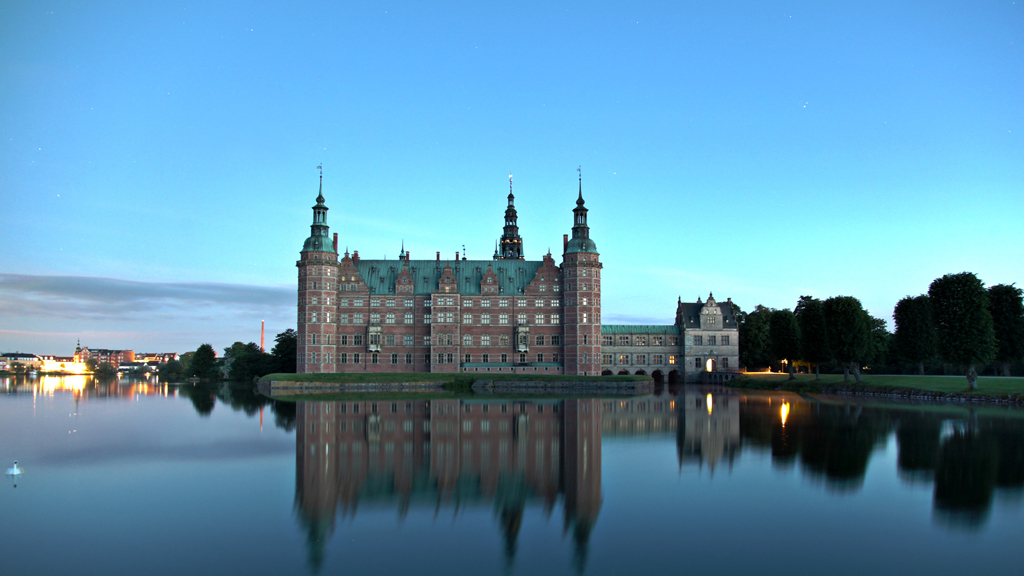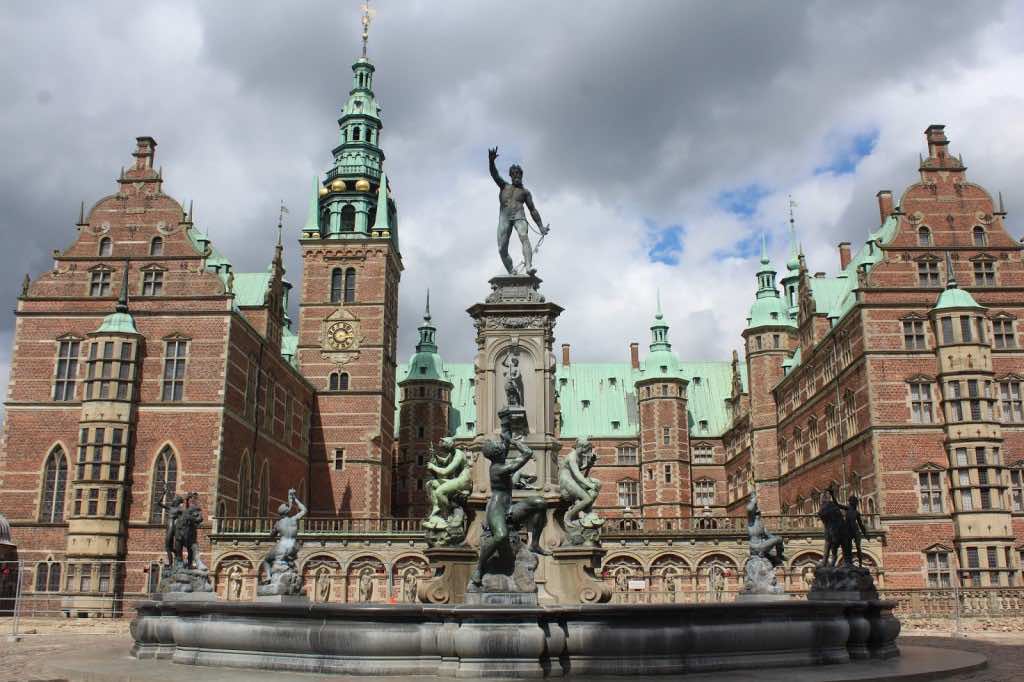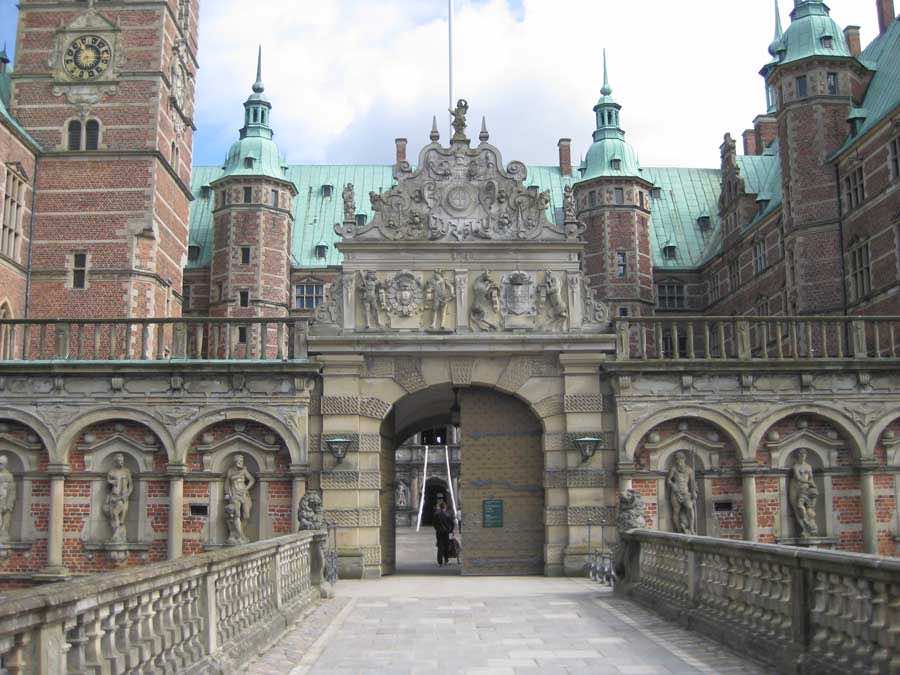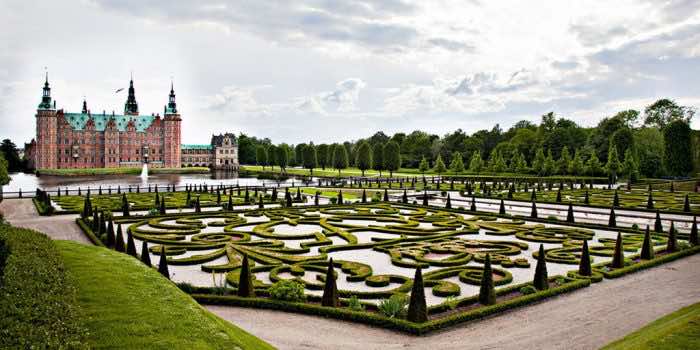Frederiksborg Castle is a palace complex located in Hillrod, Denmark. The current structures found there were built as the royal residence for the longest-serving Danish monarch, Christian IV and exhibit his lavish taste. The king traveled all across Europe during his sixty-year-long reign and the architecture he saw and experienced greatly inspired the design of Frederiksborg Castle.

Frederiksborg Castle was initially the spot of a 16th century manor house that Christian IV’s father King Frederik acquired and rebuilt for himself. Notably it was the first Danish castle to be built inland instead of on the coast and also the first to be built for purposes of recreation and not defense as the King used it primarily as hunting lodge. Christian IV travelled extensively across Europe in the early years of his reign and during these travels he visited royal residences and courtly palaces of monarchs all over Europe, from England to the German provinces and France. These experiences led him to commission a suitable royal residence for himself, and thus the existing manor was demolished and instead a palatial complex was designed for the location.

The Flemish architect Hans van Steenwinckel the Elder planned a palace that was based on design principles closely related to the Northern Mannerism school of art and design. Construction lasted from 1600 to 1620 and the result was a Dutch Renaissance Palace comprised of three wings, the King’s wing, the Princess’ wing and the Chapel Wing, that exhibited elements from Baroque design sensibilities as well. In line with Flemish and Dutch Renaissance tradition, the quadrangular castle covering the entire area of the northern islet is built of red brick with stepped gables, towering spires and light sandstone decorations. The symmetry of the main structure is broken by the large bell tower on the Chapel Wing. All three wings are fundamentally independent buildings which have been joined together to form a complex.
The building is adorned with sculptural decorations evoking astrology, mythology and historical glory. The forecourt leading to the palace contains the Baroque Castle Garden, which consists of three main terraces with cascading fountains and small ponds supplied by two large reservoirs above the Baroque garden. The current state of the palace is the result of massive rebuilding that had to be undertaken after a fire severely damaged it in 1859.



